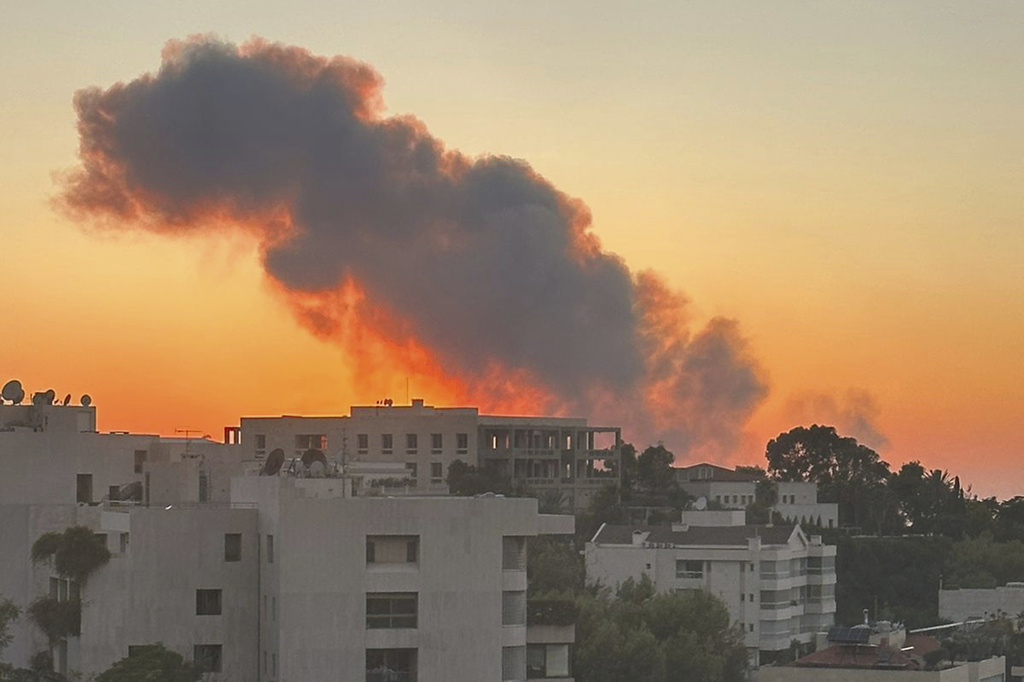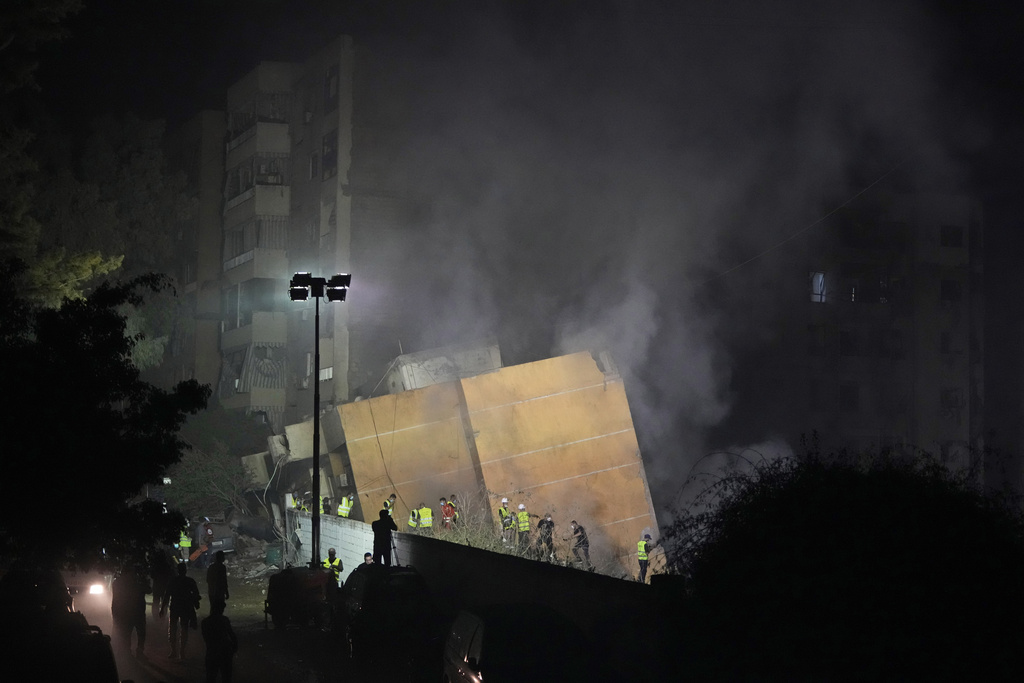Israel Targets Hezbollah Leader in Escalating Lebanon Conflict \ Newslooks \ Washington DC \ Mary Sidiqi \ Evening Edition \ The Israeli military launched airstrikes on Hezbollah’s headquarters in Beirut, causing massive explosions and leveling multiple buildings. The attack, aimed at Hezbollah leader Hassan Nasrallah, escalates tensions and raises concerns about full-scale war. The strikes come amid an intensified Israeli campaign against the militant group, killing at least two people and injuring dozens.

Israeli Airstrikes on Hezbollah: Quick Looks
- Israeli military struck Hezbollah headquarters in Beirut, targeting its leader Hassan Nasrallah.
- Massive explosions destroyed multiple high-rise apartment buildings in a Hezbollah stronghold.
- At least two people were killed and dozens injured; death toll expected to rise.
- Israeli PM Netanyahu cut short a U.S. visit following the strikes.
- Hezbollah responded with rocket attacks on Safed, Israel.
- Israel’s escalated air campaign aims to eliminate Hezbollah’s leadership and stop rocket fire.
- Hezbollah has been engaged in near-daily exchanges of fire with Israel since October 7.
- The attack dims hopes for a ceasefire, with Israel considering a ground invasion.
Deep Look
The Israeli military intensified its campaign against Hezbollah with a series of powerful airstrikes on Friday, targeting the militant group’s headquarters in Beirut. The strikes, which occurred at nightfall, leveled multiple high-rise apartment buildings in the city’s Dahiyeh suburb, a known Hezbollah stronghold. The attack specifically targeted Hezbollah’s leader, Hassan Nasrallah, though it remains unclear if he was injured or killed. According to reports, at least two people were killed and 76 others were wounded, with numbers expected to rise as rescue workers continue their efforts.
Lebanese authorities confirmed that six apartment towers were reduced to rubble by the strikes, with the explosions sending a wall of black and orange smoke into the sky. The targeted district, Haret Hreik, is predominantly Shiite and is home to many of Hezbollah’s offices and operations. Nasrallah, a key figure in the group’s leadership, has been in hiding for years, rarely appearing in public and delivering speeches via video from undisclosed locations. His targeting marks a significant escalation in Israel’s ongoing conflict with Hezbollah.
Israeli Prime Minister Benjamin Netanyahu, who was in the U.S. at the time of the attack, quickly returned to Israel after being briefed on the situation. Hours earlier, he had addressed the U.N., stating that Israel’s intensified offensive against Hezbollah would continue, further diminishing hopes for an internationally backed cease-fire. During his speech, Netanyahu emphasized that Israel’s military goals were clear and that the country would continue its efforts to degrade Hezbollah’s capabilities.
Rear Admiral Daniel Hagari, an Israeli military spokesperson, confirmed that the strikes hit Hezbollah’s main headquarters, which was strategically located underground beneath residential buildings. The blasts were some of the largest to hit Beirut in the past year, and according to Lebanon’s national news agency, rescue workers were seen clambering over large chunks of concrete and twisted metal in their search for survivors. Footage from the scene showed residents carrying their belongings as they fled the devastated district.
In response to the attack, Hezbollah launched a series of rockets at the northern Israeli city of Safed. The militant group issued a statement claiming that the rocket fire was “in defense of Lebanon and its people” and a retaliation for Israel’s “barbaric violation” of Lebanese cities. While the Israeli military confirmed that a house and a car in Safed were hit, no further details were provided.
Israel has dramatically escalated its military operations in Lebanon over the past week, killing over 720 people, including dozens of women and children, according to Lebanon’s Health Ministry. The ongoing conflict between Hezbollah and Israel began after Hamas launched an attack on October 7, with Hezbollah firing rockets into Israel in solidarity with the Palestinians. This has led to near-daily exchanges of fire, displacing tens of thousands of residents on both sides of the border.
While Israel’s campaign in Lebanon has intensified, military officials have indicated that the operation’s goals are narrower than those in Gaza, where Israel is seeking to dismantle Hamas’ military and political structure. In Lebanon, the primary aim is to push Hezbollah away from the border. Despite the escalation, officials suggest that the campaign against Hezbollah is unlikely to last as long as the ongoing war in Gaza.
The scale of the destruction caused by Friday’s airstrikes has further heightened tensions in the region. The Lebanese Health Ministry confirmed that two women were pulled from the rubble of a building in Tyre following earlier Israeli airstrikes. Hezbollah, meanwhile, remains defiant, vowing to continue its resistance against Israel. The militant group’s supporters gathered in large numbers for the funerals of three Hezbollah members killed in earlier strikes, including the head of its drone unit.
Hezbollah’s top official in Beirut, Hussein Fadlallah, delivered a fiery speech during the funeral procession, pledging that the group would not back down in its fight against Israel. He emphasized that the group would continue its support for Palestine and Gaza, framing the conflict as a battle for the region’s future. Fadlallah’s remarks underscored the group’s determination to maintain its offensive despite the mounting death toll.
As the conflict drags on, the international community continues to call for a cease-fire, though hopes for a diplomatic solution appear slim. Netanyahu has repeatedly stated that Israel will not stop its offensive until its objectives are achieved, and Hezbollah has not indicated any willingness to negotiate. With both sides locked in a dangerous cycle of retaliation, the potential for further escalation remains high.
Israel Targets Hezbollah







